It was a quiet week. All the longer term news was as one would expect. That is good news.
The only surprise was that deaths jumped again while cases fell, rather than the other way around. On net, that too is good news.
If news remains this quiet for a while, I would be able to stop doing weekly Covid updates. Even more good news.
Executive Summary
- Deaths unexpectedly up for a second week, should be peaking here.
- Cases unexpectedly down a lot in Northeast, other regions likely will follow soon.
- Estimate says China’s wave peaked at ~3x the size of last year’s Western wave.
Let’s run the numbers.
The Numbers
Predictions
Predictions from Last Week: 385k cases (+5%) and 3,100 deaths (-15%), which I noted had high uncertainty and I didn’t even remember that there was MLK Day – when I am adjusting for a future holiday, I explicitly note that.
Results: 335k cases (-8%) and 3,867 deaths (+5%), the reverse result.
Predictions for Next Week: 320k cases (-5%) and 3,600 deaths (-8%).
There were a number of states reporting obviously time-shifted results in both directions. I chose not to adjust any of them other than Florida’s 2-week cycle.
Thus, the rise in the Midwest is mostly due to Illinois and Indiana reporting all of last week as part of this week, but even with a one-sided fix we still see that the higher level of deaths maintained itself despite the holiday. The increase in deaths seems real, yet so was the decline in cases. I got this one backwards. So things were recently modestly worse, but they should get better from here.
Deaths

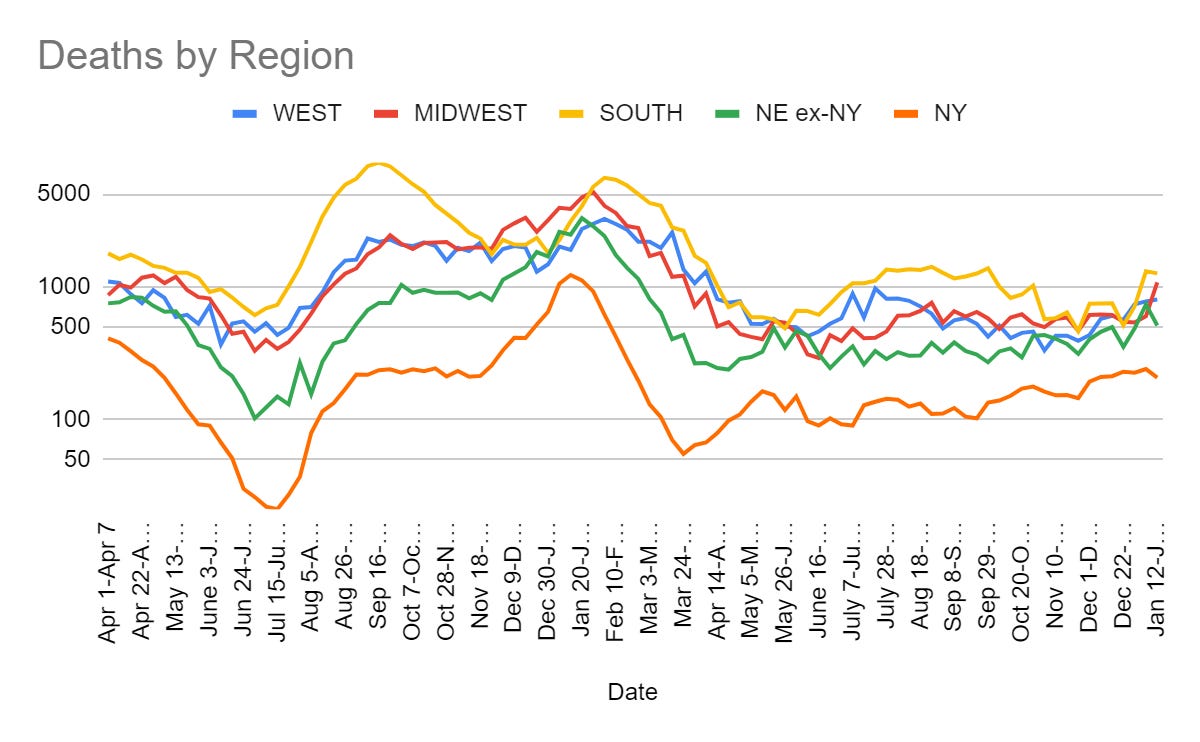
Cases


Physical World Modeling
Celine Gounder notes that we did not have a winter surge in hospitalizations or deaths, attributes this to immunity built up over time. That is in spite of XBB.1.5. She also has a thread of the latest evidence on boosters that is more of the same. There is a modest spike in deaths the last two weeks, but nothing that implies exponential problems, especially with the Northeast already seeing large case declines.
Even more than that, in the US states dominated by Omicron XBB.1.5, hospitalizations are already plateauing.
Meagan Kall goes over the latest UK technical briefing. BQ.1.5 has the replication edge over other variants, as we presumed. Here’s vaccine effectiveness, which remains substantial but may be down somewhat.
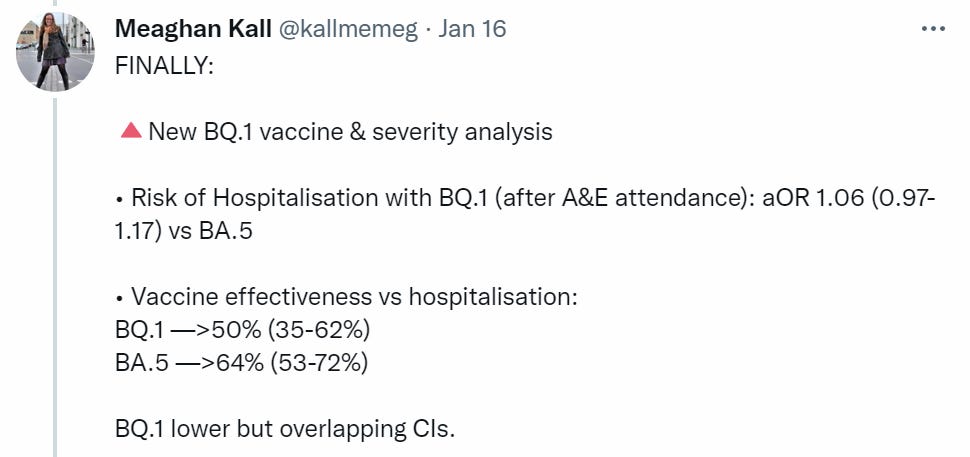
Bloom Lab speculates on future Covid-19 disease burden based partly on our experience with other viruses. Expects lower burden over time for most people due to prior infections, but perhaps not much impact for the elderly, which unfortunately is where most of the risk lies.
Zeynep Tufecki notes that in a meta-anlysis of Covid cardiac symptoms, out of 106 studies, only 6 had representative samples. The others were essentially worthless.
In Other Covid News
Ryan Bourne reports on the nonsensical policies of the AEA conference, which required masking and proof of a booster, while being held inside a hotel packed with unmasked guests, with the under-40 crowd mostly complying and the over-50 crowd mostly not complying. As a result of some mix of the masks, the selected topics (a lot of climate, race and gender papers and discussions, not so many on inflation or growth), the ability to stay home and the lack of feeling that one would suffer for not showing up, not many showed up and the conference lost a million dollars. That all sounds like quite the failure of economics.
China
Scott Sumner reminds us of the obvious fact that China did not previously have a major Covid outbreak and cover it up, as there would have been no way to cover it up. Also the obvious fact that Covid Zero was a clear and highly expensive politically-motivated error.
How big did this wave get before peaking? Here’s an estimate (preprint).

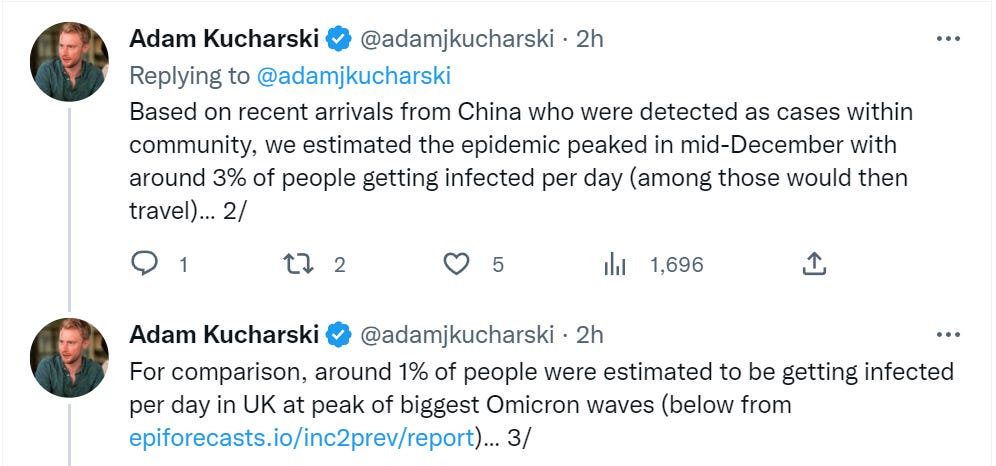

I’d also suggest that catching Covid negatively impacts chances of travelling in the short term, although by contrast being inclined to travel likely increases infection risk, and that Beijing likely got hit unusually bad the way NYC did.

Huge error bars everywhere, but peaking at several times the peaks we had last year in Europe seems plausible to me under the circumstances. Given that you can only infect 3% of the population a day for so long before you infect everyone, we should now be well past the peak in at least many areas.
Remember
Did you know mask mandates that say “you are required to wear a mask” are more like… suggestions? This is in reference to the AEA conference:
But Olney’s response was shocking.
She wrote:
Huh? I’m guessing that means you’re not here. Like all mask mandates, it’s more a suggestion than anything else. As is true everywhere. Take care of others, or do your own thing. Your choice.
To be fair to Olney, a substantial number of people disregarded the requirement and the rules were not enforced, as noted last week. That does not make this better. If you institute requirements, enforce them. If you don’t want to enforce them and they’re more like ‘suggestions’ then I suggest that, instead, you suggest them. Otherwise, you are punishing those who think your words have meaning and that your rules need to be followed, and you are sending the strong message not to follow your rules.
This also applies to everyone else, especially governments.
Other Medical and Research News
How bad things are getting for the NHS, a continuing series.

A simple and highly plausible case that iron deficiencies are very bad and you should treat them. My understanding is that magnitude matters, so not all cases are a big deal, but some cases are a very big deal and it is a cheap action to check if that means you.
Tl;dr: If you are vegan or menstruate regularly, there’s a 10-50% chance you are iron deficient. Excess iron is dangerous so you shouldn’t supplement blindly, but deficiency is easy and cheap to diagnose with a common blood test. If you are deficient, iron supplementation is also easy and cheap and could give you a half standard deviation boost on multiple cognitive metrics (plus any exercise will be more effective). Due to the many uses of iron in the body, I expect moderate improvements in many areas, although how much and where will vary by person.
This is quite a lot of prescriptions (source) for something that is almost, but not quite entirely not unlike meth.
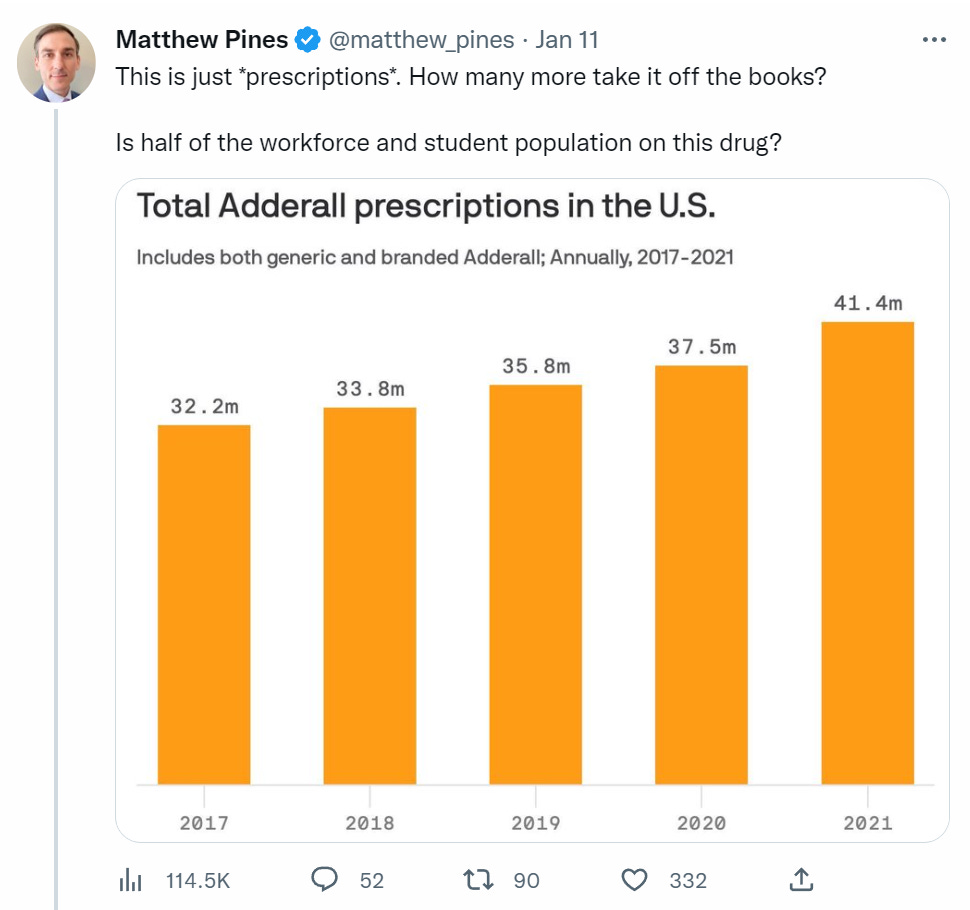
The shortage is, as I understand it, entirely induced by restrictions on supply. If you are going to give people prescriptions like this, you owe it to them to let them easily get their fix. At the same time, if we are giving out over forty million prescriptions for this, multiple things are deeply wrong.
Another visualization of the key predictor of obesity is not genetics, it is what year it is.
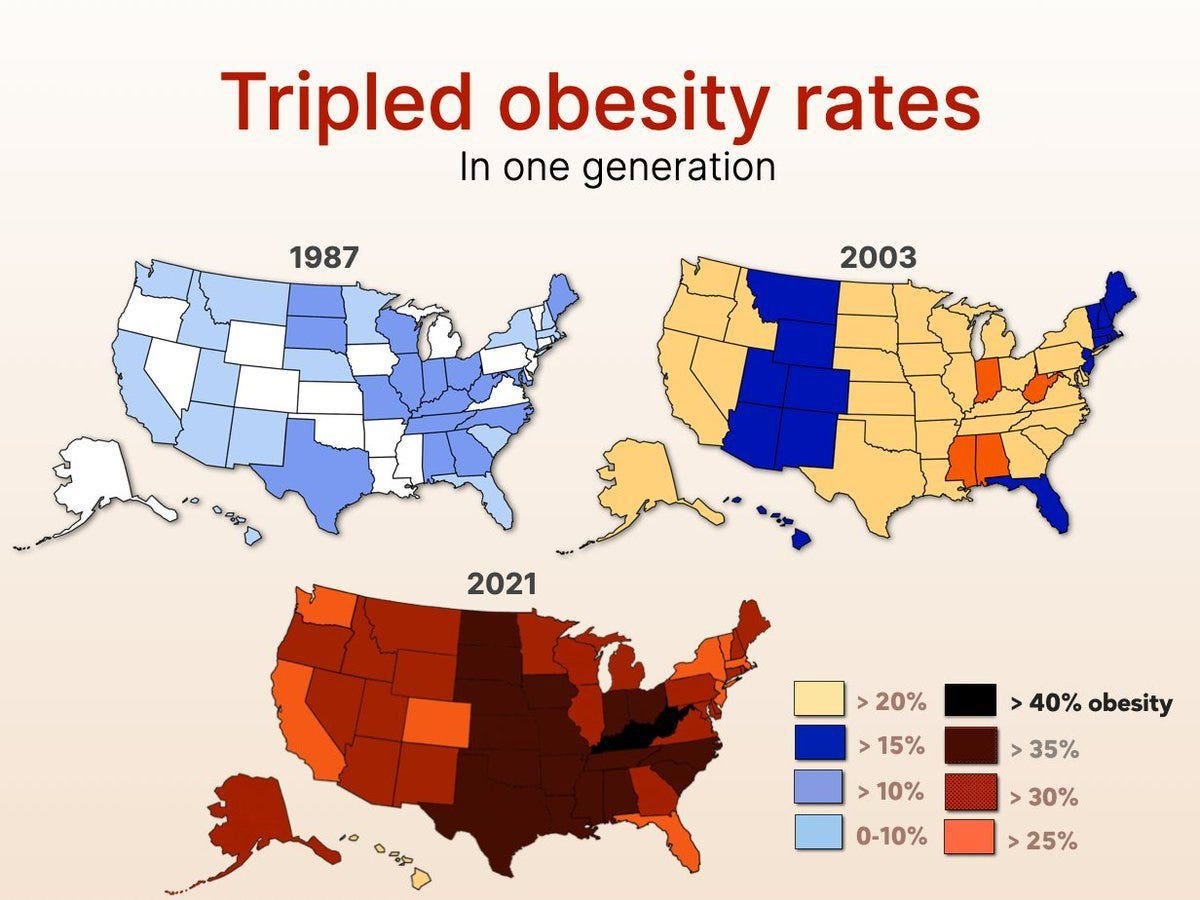

That last visualization is just absolutely wild and it’s surprising that I haven’t *noticed* such a major trend in my lifetime. Can changes in the measurement or reporting of obesity be ruled out as a cause?
Could this be connected to our aging population? I certainly have observed that the older someone is the more likely they are not to be fit (myself included…).
People do get more likely to be obese as they get older (up to a point, then this reverses) but the magnitude of that effect is small compared to the trend.
I believe we can indeed rule those out.